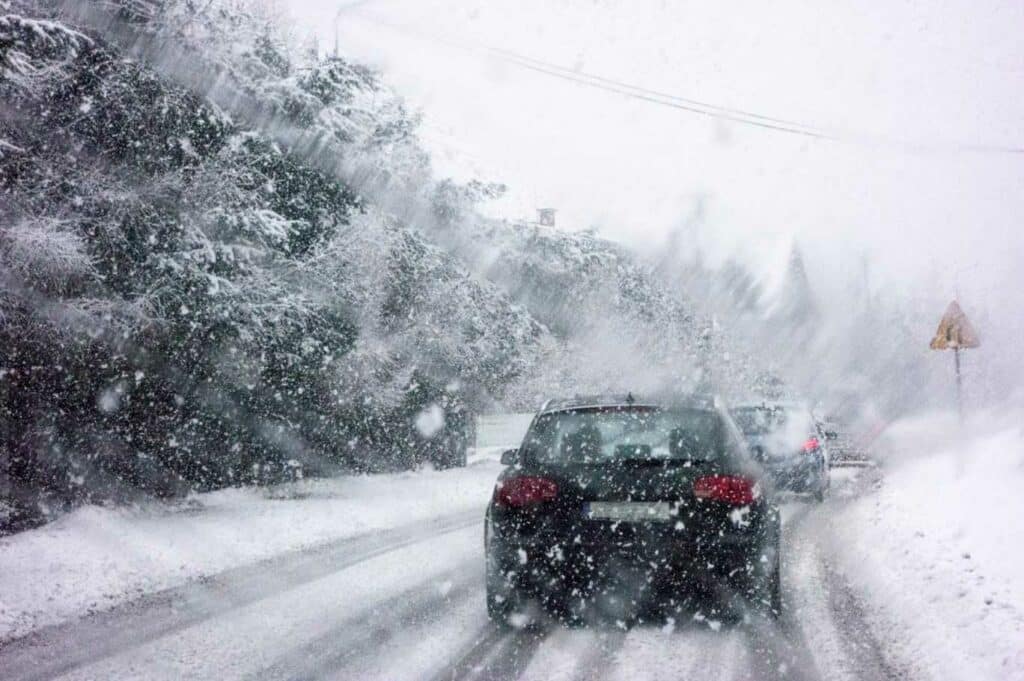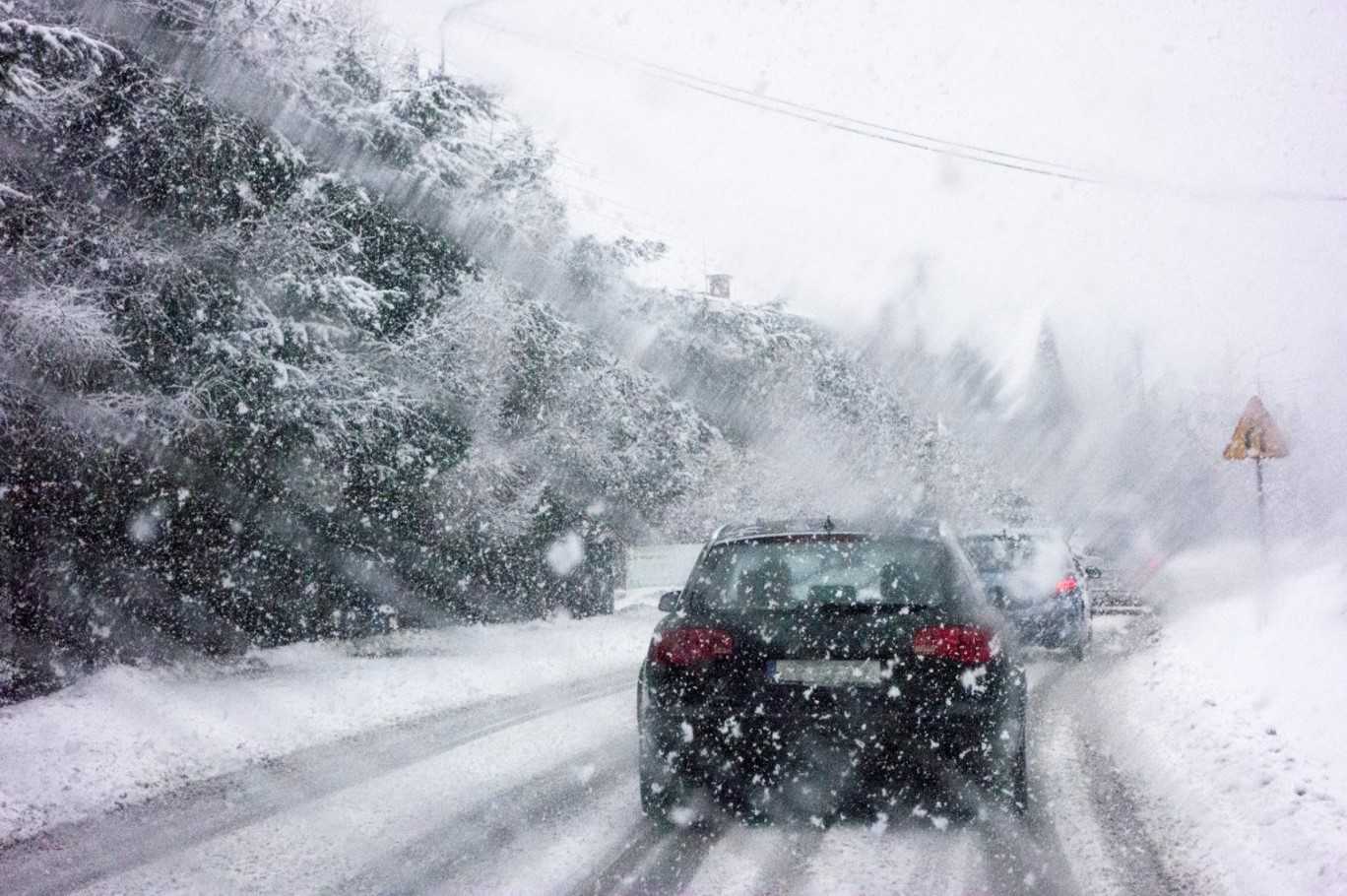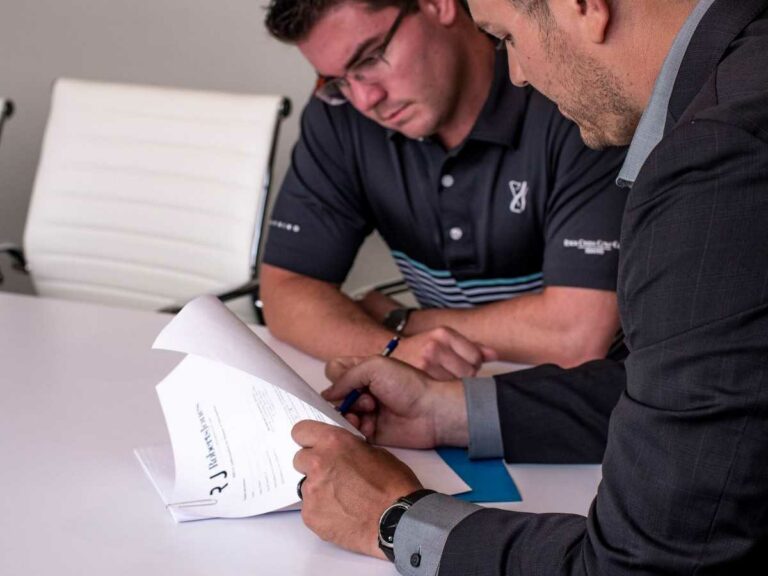As we head into the winter season, we are once again faced with the perils of winter driving. Seattle, in particular, is challenged with heavy rains, snow, sleet, black ice, hail, and other unpleasant conditions that can significantly impact one’s driving ability. At Robert Jones Law, we’re dedicated car accident lawyers who serve many individuals who experience winter driving woes. To help you stay safe this winter, we want to offer our Seattle drivers some valuable tips and legal insights on icy road safety to help you drive confidently regardless of the weather. Let’s dive in!

Understanding Icy Road Driving Risks
When driving the hilly, winding, and narrow streets, icy roads pose a significant risk to Seattle drivers. As highlighted by data from the U.S. Department of Transportation (DOT) Federal Highway Administration, snowy regions like ours, where over 70% of roads are affected by winter conditions, the dangers of winter driving are starkly evident.
First, pavement friction decreases in snowy and ice conditions, leading Seattle Drivers to have a harder time slowing down their vehicle and keeping it straight. Second, on such roads, the average driving speed can drop 30-40%, especially for scared or inexperienced drivers. This decrease in speed can conflict with other drivers, escalating both the likelihood and severity of crashes.
The DOT reports that annually, 24% of weather-related vehicle accidents happen on icy or slushy pavements, tragically resulting in over 1,300 deaths and more than 116,800 injuries across the USA. To prevent becoming a part of this statistic, let’s dive into some ways to practice icy road safety.
Icy Road Safety Tips for Seattle Drivers
Prepare for Winter Driving
As they say, “There’s no harm in hoping for the best as long as you’re prepared for the worst.” Before you even consider getting into your vehicle to drive through icy road conditions, we suggest doing the following:

- Weather Forecast Check: Always consult the latest weather updates. If severe winter weather is forecasted, delay your travel to avoid hazardous conditions.
- Statewide Pass Conditions: Before planning any trip over the mountains, review current pass conditions online to stay informed about road situations.
- Tire Inspection: Confirm that your vehicle’s tires are in good condition with adequate tread for winter driving.
- Snow Tires or Chains: For regular travel in extreme winter areas, consider equipping your car with snow tires or chains for enhanced traction.
- Vehicle Winterization:
- Windshield Wipers: Effective wipers are crucial for maintaining visibility during snowfall or sleet.
- De-icing Supplies: Keep an ample supply of de-icing agents and tools to clear your windshield and lights.
- Antifreeze Levels: Check and maintain appropriate antifreeze levels to prevent engine freezing.
- Emergency Kit: Equip your vehicle with a winter emergency kit, including blankets, a flashlight, water, and non-perishable snacks.
Taking these steps enhances your safety and positions you favorably from a legal standpoint should any incidents occur. As your dedicated car accident lawyers, we at Roberts Jones Law advocate for proactive measures to safeguard Seattle drivers during the winter months.
Safe Driving Practices for Seattle Drivers
As a Seattle driver, you may be used to wind and rain, but snow and ice are not nearly as common for you as for the rest of Washington drivers. Due to this, we highly recommend utilizing the following safe driving practices when dealing with icy roads.
- Avoid Cruise Control: Don’t use cruise control in winter conditions so to maintain better control of your vehicle.
- Be Cautious with 4WD/AWD: Remember, four-wheel and all-wheel drive vehicles do not necessarily handle better on ice and snow. Be sure to read the car user manual before attempting these.
- Recognize Skids: If you start to skid, remain calm. Gently steer in the direction you want to go and avoid slamming on the breaks.
- Increase Following Distance: Maintain a larger distance than usual from the vehicle in front to ensure safe stopping time. Remember, slowing down will take longer than average!
- Use Headlights: Always keep your headlights on for improved visibility, even during daylight.
- Reduce Your Speed: Drive slower than usual to allow ample time for reaction. However, if you are going far below the speed limit due to limited visibility, make sure to put your hazards on so drivers are aware of your abnormal driving as they approach you.
- Give Way to Snowplows: If you’re behind a snowplow, leave extra room as they clear the way. Please make sure to give them the right of way; they have a very important job.
- Approach Intersections Carefully: Gently apply brakes well in advance when approaching intersections to avoid skidding.
Of course, the top tip we can offer for icy road safety is to stay off the roads when you can. The best way to prevent accidents is to not be on the streets in the first place. Unless absolutely necessary, stay home. Plus, if you are already on the road and a weather condition hits that you feel fearful or uncomfortable driving in, pull off the road into a safe parking lot and call for an experienced driver to come get you.
As car accident lawyers, we emphasize these practices not just for your safety but also to reduce potential legal complications in case of an accident. Remember, being cautious and prepared can make a significant difference on icy roads. Unfortunately, accidents can still happen.
What to do If You Get in a Car Accident
In the event of an accident on icy roads, follow the standard accident response procedure:
Step 1: Check for Injuries

Prioritize the safety of all involved. Call for medical help if there are any injuries. If there are no apparent injuries during the moment, still seek medical attention afterward.
Step 2: Move to Safety
If it’s a minor accident and safe to do so, move vehicles off the road to prevent further hazards. Be aware that in snowy conditions, visibility will be diminished, so there is a greater chance of further accidents by staying on the road.
Step 3: Contact the Police
Always file a police report, regardless of the accident’s severity. This is important for insurance claims. Be sure to never admit fault, even if it was partially your fault.
Step 4: Exchange Information
Gather names, contact details, and insurance information from all parties.
Step 5: Document the Scene
If safe to do so, take photographs of the vehicles, road conditions, and any relevant landmarks.
Step 6: Seek Legal Advice
Consult with a car accident lawyer to discuss your case and protect your legal rights. As experienced car accident lawyers, we at Roberts Jones Law stress the importance of these steps, as they are vital in protecting your legal interests following an icy road accident.

For an in-depth explanation of what to do immediately after a car accident, please read our full blog!
Seattle Drivers Trusted Guide for Expert Legal Advice and Representation
In conclusion, remember the essentials of icy road safety: vehicle preparation, cautious driving, and knowing how to handle skids. Legal aspects, such as understanding liabilities and insurance claims, are equally crucial. We at Roberts Jones Law are committed to guiding you through any legal complexities that arise from winter driving incidents.
Stay safe and informed on the road. Contact Robert Jones Law for expert legal advice and representation.






